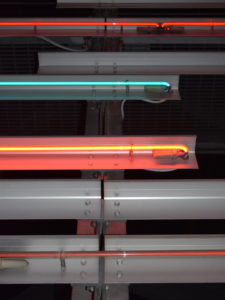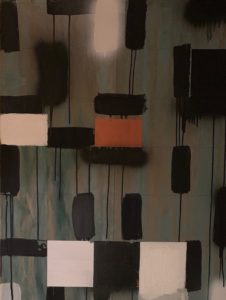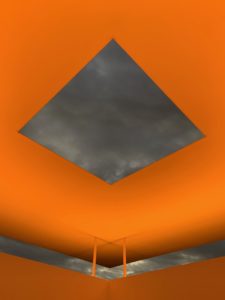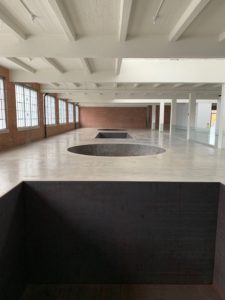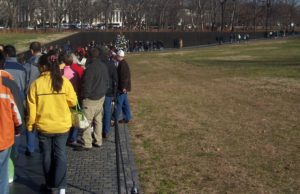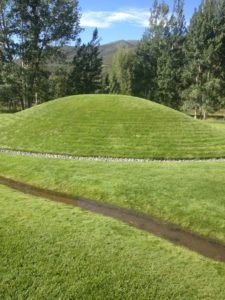Art is the most effective mode of communication that exists.
~ John Dewey
mills studio Statement
Meaningful questions about the relationship between art and architecture go far beyond what architecture is best for displaying art and the answers help clarify the purposes of both art and architecture. The answers also expose what art and architecture have in common and what makes each art form unique. It is not coincidental that most patrons that commission important architecture are also patrons of the fine and or performing arts. The reason is that at their best the arts and architecture serve many of the same indispensable purposes. Both art and architecture satisfy the maker’s creative urge to express a world view of the way things ought to be and provide to the patron and “viewers” a glimpse of a tangible or intangible truth that helps clarify their own world view. It is not uncommon for this truth to simply be that “beauty” helps redeem the all too often ugliness of everyday life.
mills studio gains inspiration from the fine arts in two specific ways. Firstly, art acts as tangible proof that the physical, intellectual, and emotional effort it takes to create significant work is worth the expenditure. Day to day demands, especially of construction, make it very expedient to compromise one’s vision so tangible works of achievement are needed as a reminder of what is possible and can be achieved if a clear vision is not compromised. Secondly, art shows our actual physical, intellectual, and emotional reactions to specific physical implementations. It is invaluable to evaluate how an artist’s intent aligns or does not align with his physical manifestations. Seeing what works and does not work in the real world informs many of mills studio’s specific design decisions. Experiencing how a myriad of artists approach the same few universal issues that are a part of mills studio’s architectural agenda, such as the accidental versus the intentional or the organic versus the grid, help mils studio clarify its own thinking and how that thinking can be expressed and understood visually and experientially.
Architecture both creates a context and is affected by its context. Architecture creates a context for experiencing and judging art and art or lack of it affects our experience of architecture. mills studio attempts to physically integrate art and architecture as an expression that is possible for the functions of day to day life to not only not lessen architecture’s impact but to show that they can also be aesthetic experiences. The best integration of art and architecture is where each makes the fullest experience of the other possible while each also retains its own identity.
Although art and architecture are generated from many of the same concerns and themes, architecture is unique and does differ from the fine arts in important ways. The most meaningful difference for mills studio is architecture’s inherent connections to institutional meaning that personal artworks mostly do not and need not have. The general tension between art (a mostly personal endeavor) and architecture (a mostly collective endeavor) and its appropriate integration is representative of the larger tension between the individual and the state. Showing how art and architecture can be appropriately integrated provides a model of how the personal and the collective might be effectively reconciled and provide models of responsible self expression, which is what all significant art achieves.
ART
The DTS Project House design and aesthetic is very much influenced by the work of fine artists and specific features are inspired by specific artists and artworks. The project is developed to integrate the Owner’s collection, provide unique opportunities for projection, light, and video art, and inspire unique commissioned site specific pieces. Much of the landscape is looked at and treated as a piece of land art. The property is also developed to accommodate events featuring the performing arts. The documentation of the construction process is considered as its own art project.
Integration of Art and Architecture
The DTS Project House design and aesthetic owe much to work of artists like Donald Judd, Richard Serra, Dan Flavin, James Turrell, and Robert Irwin just to name a few. These artist’s aesthetic results from their attitudes toward light and space, use of exposed industrial raw materials and exposed structure – the aesthetic is a result of how their pieces are made. The artists of the 1960’s and 70’s California Light and Space movement, like Mary Corse, Larry Bell, John McCraken, and John McLaughlin remind mills studio of what is unique about working in the western United States. Specific pieces by artists like Ed Moses (Cloud Cover Series of 1980-1990’s) and Fred Fehlau greatly influenced and help clarify mills studio’s thinking about and expression of specific subjects like the overlay of the grid and the organic. Specific pieces by artists like Barbara Kruger (Shafted, 2008 at BCAM) and Jaume Plensa’s (Crown Fountain, 2004, in Chicago’s Millennium Park) inspire design intent of specific DTS Project House features like the elevator and motor court. Artists and Architect’s projects such as Keith Sonnier’s Motordom, 2004, at Morphosis’ Caltrans Building and Doug Aitkin’s Lighthouse, 2012, on Allied Work’s Dutchess County Residence are models showing the full integration of art and architecture where each retains its own identity. Works of artists like Leo Villareal, Multiverse, 2008, and Dan Graham’s Child’s Play, 2015-16 show art as a spatial experience. Works such as James Turrell’s various Skyspaces and Robert Irwin’s scrim pieces inspire specific treatments in the DTS Project House. Inspired by the example of artists the DTS Project House attempts to raise many of the functional requirements of day to day living to aesthetic experiences, such as going up and down in the elevator, traversing the central staircase, swimming laps, watching television, and drawing the curtains.
Collection
The Owners’ eclectic collection consists chiefly of two-dimensional pieces by mostly emerging artists with whom the Owners have a personal connection or the pieces have a connection to the Owner’s place of residence – Hollywood, California. A focus on photography reflects the Owner’s longtime interest in and practice of amateur photography.

Projection / Light / Video Sculpture
The living areas of the DTS Project House are mostly transparent walls of glass so there are limitations on hanging traditional two-dimensional pieces. Intersecting with the Owner’s interest in technology, this “limitation” provides an opportunity to incorporate and integrate projection, light, and video artworks. Various building surfaces, from pool water to ceilings, provide opportunities for projection and light scultptures and other elements will emanate light. The house will be equipped with the necessary infrastructure, such as projectable switched glass, projection equipment, and full integration capabilities with the home automation system. The sound and lighting systems can be fully integrated into any piece. Television screens are hung like artworks and will double as opportunities for static and dynamic artworks. The closed circuit camera system provides the opportunity to create video and interactive pieces.
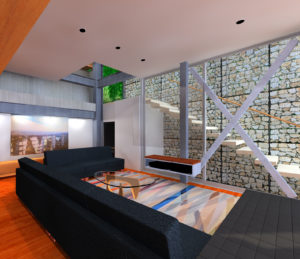
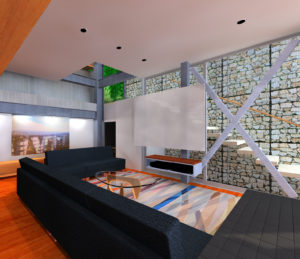

Commissioned Site Specific Pieces
The Owners have engaged artists and technologists to create pieces that explore and exploit the unique opportunities that the DTS Project House and its site provide. Certain features of the DTS Project House, such as the multilevel central stair, were developed with the intent that a commissioned artwork would complete the design intent and other usable features were identified by the artists. Development of pieces that used the spatial experience of the house and hillside, especially the severe change in height and thus perspective, were of great interest as they would explicitly exploit the unique qualities of the DTS Project House’s design.
Also of particular interest were pieces that made a functional requirement, such as lighting the central stair case, a poetic opportunity. It is also intended that many of the buildings functions and functional features have a presence that may not be defined as artworks produced by artists, but are still a potential aesthetic experience. This extends from the storage of wine to the racks of low voltage equipment, to the way a video screen is mounted.
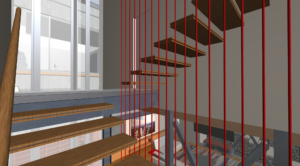
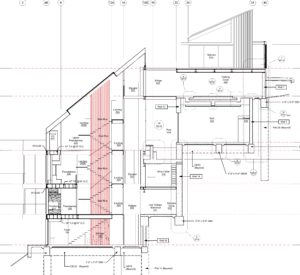
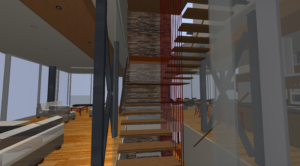
Landscape / Land Art
The changes in elevation at the DTS Project House, especially the lower hillside with its circulation path, provide the necessity and opportunity to sculpt the earth, place sculpture in the landscape, and provide projection / light pieces to walk in and around and view from above. The lower hillside necessarily acts as a canvas to be looked down upon from the house. The work of artists Walter de Maria, Andy Goldsworthy, Michael Heizer, Maya Linn, and James Turrell serve as inspiration about how to consider the land and its artistic development.
The vantage point high above the hillside provides an opportunity to make visible a larger pattern not readily apparent from ground level as a way of expressing seemingly cosmic individual experiences might be part of a larger cosmic order. In addition to the noted artists, the Landscape Architect James Corner of Field Operations (Taking Measure Across the American Landscape), has helped mills studio clarify how Landscape Architecture, technology, and Land Art might intersect at the DTS Project House to “relate the everyday world to the infinite and invisible dimensions of the universe…”
Just as in the house, the functional requirements, such as retaining, lighting, and water flow, of the landscape design were looked at as opportunities to raise scientific solutions to artistic ones creating both intimate and group aesthetic experiences.
Performing Arts
The Owners intend to integrate the performing arts into their use of the DTS Project House. Planned infrastructure, such as theatrical lighting and sound will provide for the use of elements like the motor court turntable, the living room entry platform stage, and media room for live performances.
“Documentation”
Taking cues from such examples as Frank Thiel’s photographs of construction and Michael B. Lipkin’s “photographs” of architectural spaces, the construction process and finished building will be thoroughly “documented” with photography and video that explores when and how architectural and construction documentation becomes fine art.
Wherever art appears. life disappears.
~ Robert Motherwell
